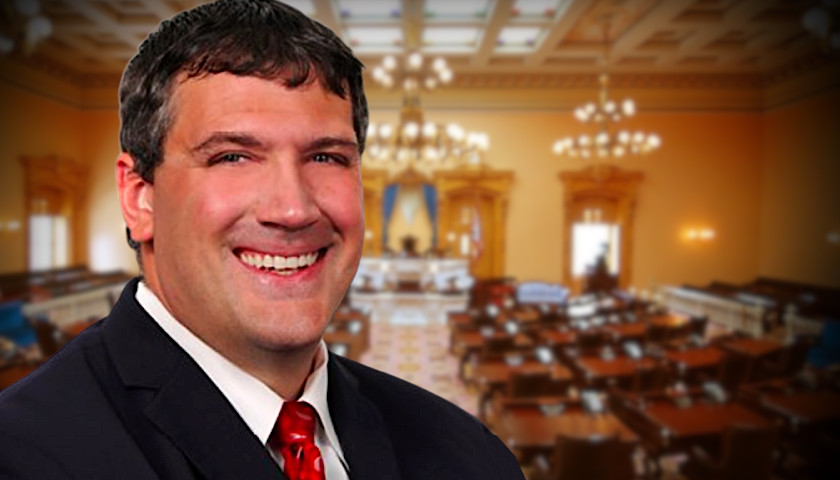The Buckeye Institute, an Ohio-based conservative think tank, warned lawmakers Tuesday that state government spending “has outpaced inflation and population growth for years,” meaning the “day of reckoning will be painful for families and businesses” if they don’t cut down on spending.
Greg Lawson, a research fellow at The Buckeye Institute, testified before the Ohio House Finance Committee on House Bill 166, the House version of the state’s biennial budget.
Lawson began his testimony by noting that the budget decisions arrive “during an economic expansion of historic duration.” In fact, if current economic growth continues until July, it will be “the longest economic expansion in U.S. history.”
“Now is the time to pursue meaningful, sustainable reform and take full advantage of this biennial opportunity to make Ohio more prosperous, while avoiding missteps that could lead to a disastrous recession,” Lawson said, suggesting changes to the proposed budget in the areas of government spending, public education, Medicaid, and taxes.
He argued that “spending ever-greater sums of taxpayer dollars every fiscal year establishes higher budget baselines that make economic downturns more painful and policy choices more difficult.”
“Setting those higher baselines forces future policymakers to choose between painfully increasing taxes during an economic slowdown, or taking a meat cleaver to current and future government projects and programs,” Lawson explained.
While he believes that the House budget bill “contains several good policy proposals,” it ultimately fails “to make the tough spending decisions that will allow for sustainable state budgets moving forward.”
He pointed to several wasteful government programs that could save the state more than $2.5 billion if cut.
On the issue of public education, Lawson suggested lowering the funding increases proposed in the House bill, since Ohio saw a 1.7 percent decline in enrollment between 2009 and 2014, and is projected to see a 5.5 percent decline between 2014 and 2026.
“The substitute House budget proposes education funding increases of 3.5 percent in FY 2019 and another 1.4 percent in FY 2020. We believe that spending increases of 1.4 percent and 1.5 percent respectively are more appropriate in light of Ohio’s declining enrollment. These lower spending rate increases would save the state $457 million without harming students,” Lawson elaborated.
He went on to suggest that the House version of the budget “sends a mixed message on taxes while delivering an overall cut in the income tax.”
“Overall, the budget proposes a net tax cut, which is certainly better than a net tax increase,” he continued. “But the tax reductions should be across-the-board so that they benefit more Ohioans, including those that will be adversely affected by the shrinking small businesses deduction.”
Lawson applauded the House budget for making “some solid proposals,” but concluded by warning that the “state spending trend must be curbed” or else risk “strangling Ohio’s already below-average economic growth rate.”
“We strongly recommend that the Committee continue to trim non-essential budget items,” Lawson said. “The Committee should also adopt a broader income tax cut while retaining critical cost containment proposals to address Medicaid and rising healthcare costs. Taking such steps will improve the budget sustainability by making it more pro-growth and more sustainable for the long-run.”
– – –
Anthony Gockowski is managing editor of Battleground State News, The Ohio Star, and The Minnesota Sun. Follow Anthony on Twitter. Email tips to [email protected].
Photo “Greg Lawson” by Greg Lawson. Background Photo “Ohio Capitol Floor” by Ohio Senate.





